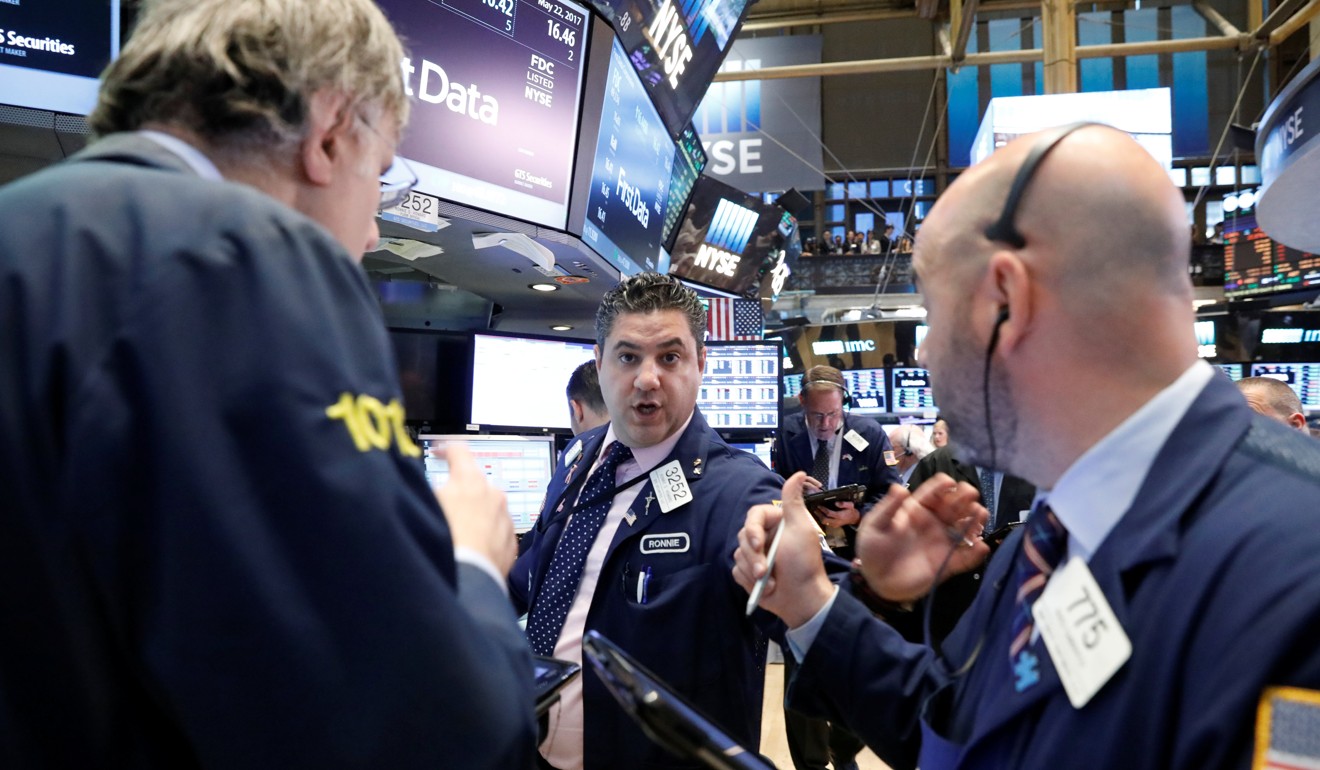
Wall Street rises after Fed minutes signal gradual approach to US rate increases

Wall Street rose, while the US dollar and bond yields fell on Wednesday after Federal Reserve meeting minutes signalled a gradual approach to interest rate hikes, and oil prices dipped on a draw of US gasoline stocks that was smaller than expected.
While the yield curve flattened, the S&P 500 closed at a record high after minutes from the US central bank’s May 2-3 policy meeting indicated the Fed would gradually raise rates and wind down its US$4.5 trillion of bond holdings.
The Dow Jones Industrial Average rose 74.51 points, or 0.36 per cent, to 21,012.42, the S&P 500 gained 5.97 points, or 0.25 per cent, to 2,404.39 and the Nasdaq Composite added 24.31 points, or 0.4 per cent, to 6,163.02.
“Absent a material slowdown in the economy, Federal Reserve officials, acknowledging support from strengthening global growth, appear poised to stay on track toward interest rate normalisation,” said Quincy Krosby, chief market strategist at Prudential Financial, based in Newark, New Jersey.
The Fed minutes also helped lift the Mexican peso to its strongest level since the election of US President Donald Trump in November, up 0.9 per cent to trade at 18.451 pesos per greenback.
The peso has tracked upwards since Mexico’s central bank unexpectedly hiked its benchmark interest rate by 25 basis points to 6.75 per cent on Thursday.

Interest rate futures imply traders see about an 80-per cent chance of a quarter-percentage-point rate hike at the Fed’s next meeting in June.
“Their plan is in place to gradually phase out reinvestments beginning in the fourth quarter,” said Matt Toms, chief investment officer of fixed income at Voya Investment Management in Atlanta.
“Even though the Fed is reducing stimulus, I think this gives the market some comfort. It won’t lift the rate structure much,” he said.
The Fed minutes also sent the dollar index tumbling 0.32 per cent, though it held near 6-1/2-month lows.
The yield gap between two-year and 10-year Treasuries shrank over 1 basis point to 96 basis points, not far above the level last seen on October 27. This implied traders did not expect that fewer bond purchases from the Fed would push up longer-dated yields.

“While June seems a given for a rate hike, investors are questioning a September move, especially if economic data continue to be mixed and if inflation doesn’t gain momentum,” Prudential’s Krosby said in an email.
Elsewhere, world stock markets recovered from initial losses after Moody’s Investors Service issued its first credit downgrade of China in 30 years, dropping China’s sovereign debt to A1 from Aa3.
The pan-European FTSEurofirst 300 index rose 0.01 per cent and MSCI’s gauge of stocks across the globe gained 0.06 per cent.
Oil prices were lower after the Energy Information Administration said US crude oil inventories fell for the seventh straight week.
US crude fell 0.35 per cent to US$51.29 per barrel and Brent was last at US$53.94, down 0.39 per cent.
Investors await the outcome of discussions in Vienna between OPEC and other oil-exporting countries on whether to extend output cuts.